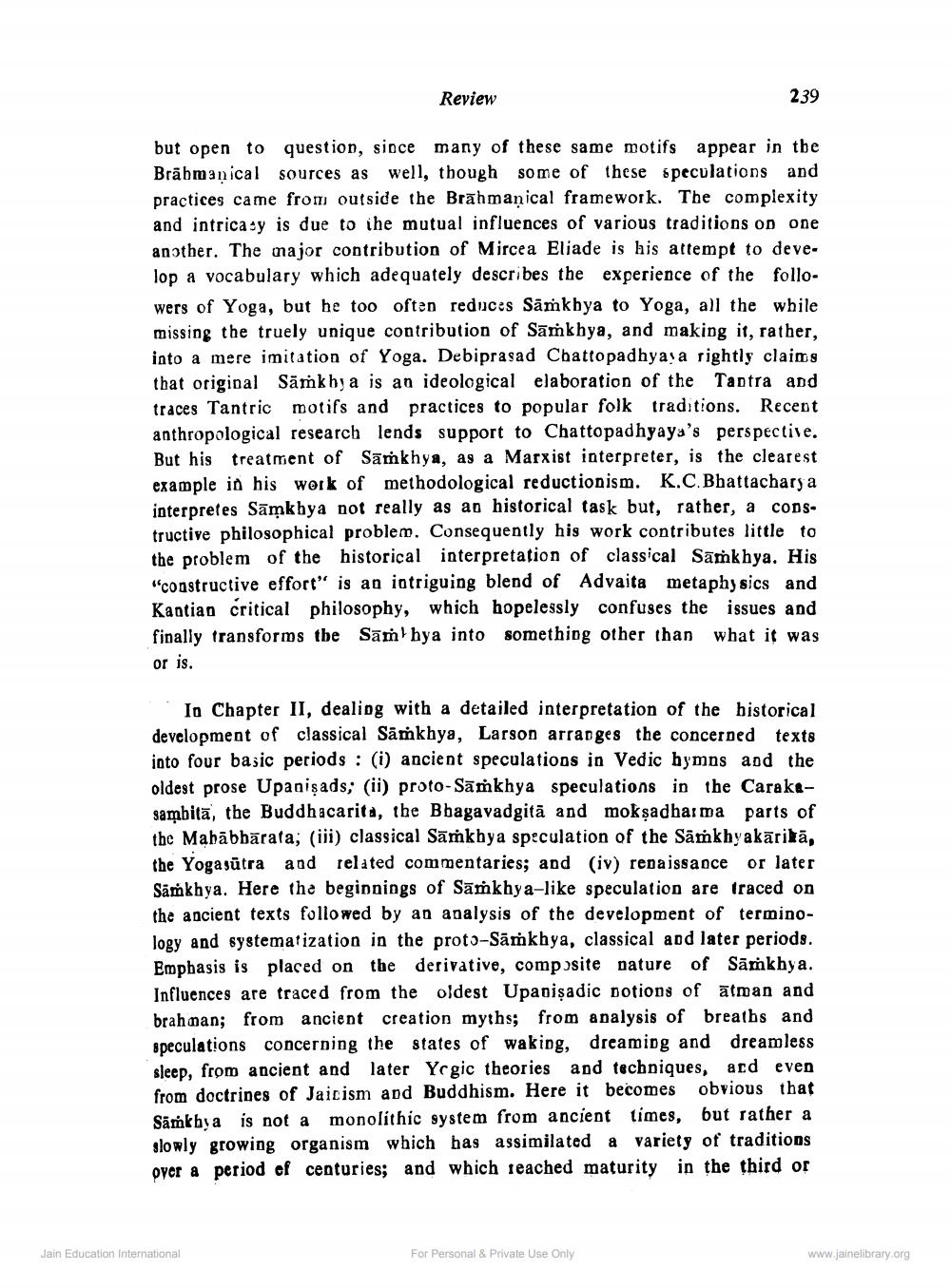________________
Review
239
but open to question, since many of these same motifs appear in the Brābmanical sources as well, though some of these speculations and practices came from outside the Brāhmaṇical framework. The complexity and intrica:y is due to ihe mutual influences of various traditions on one another. The major contribution of Mircea Eliade is his attempt to develop a vocabulary which adequately describes the experience of the followers of Yoga, but he too often reduces Samkhya to Yoga, all the while missing the truely unique contribution of Sāṁkhya, and making it, rather, into a mere imitation of Yoga. Debiprasad Chattopadhyaya rightly claims that original Sāṁkhya is an ideological elaboration of the Tantra and traces Tantric motifs and practices to popular folk traditions. Recent anthropological research lends support to Chattopadhyaya's perspective. But his treatment of Sāmkhya, as a Marxist interpreter, is the clearest example in his work of methodological reductionism. K.C. Bhattacharya interpretes Sāmkhya not really as an historical task but, rather, a cops. tructive philosophical problem. Consequently his work contributes little to the problem of the historical interpretation of classical Samkhya. His "constructive effort" is an intriguing blend of Advaita metaphysics and Kantian critical philosophy, which hopelessly confuses the issues and finally transforms tbe Sāṁ hya into something other than what it was or is.
Io Chapter II, dealing with a detailed interpretation of the bistorical development of classical Samkhya, Larson arranges the concerned texts into four basic periods : (i) ancient speculations in Vedic hymns and the oldest prose Upanişads; (ii) proto-Sāṁkhya speculations in the Carakesambitā, the Buddhacarita, the Bbagavadgitā and mokşadharma parts of the Mabābbārata; (ii) classical Sāṁkhya speculation of the Sāṁkhyakāritā, the Yogasūtra and related commentaries; and (iv) renaissance or later Samkhya. Here the beginnings of Sāṁkhya-like speculation are traced on the ancient texts followed by an analysis of the development of terminology and systematization in the proto-Sāṁkhya, classical and later periods. Emphasis is placed on the derivative, compusite nature of Sāmkhya. Influences are traced from the oldest Upadişadic potions of atman and brahman; from ancient creation myths; from analysis of breaths and speculations concerning the states of waking, dreaming and dreamless sleep, from ancient and later Yogic theories and techniques, acd even from doctrines of Jainism and Buddhism. Here it becomes obvious that Sāṁkhya is not a monolithic system from ancient times, but rather a slowly growing organism which has assimilated a variety of traditions pyer a period of centuries; and which reached maturity in the third or
Jain Education International
For Personal & Private Use Only
www.jainelibrary.org




